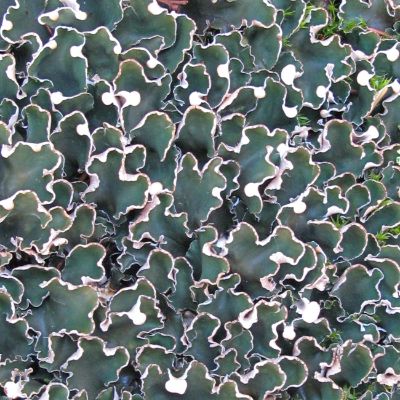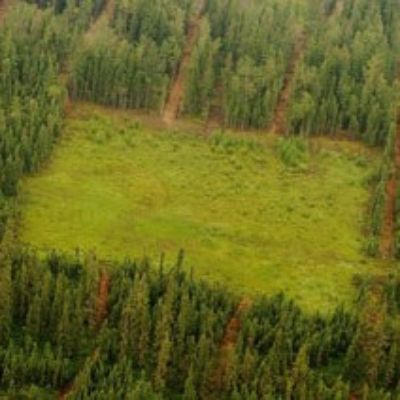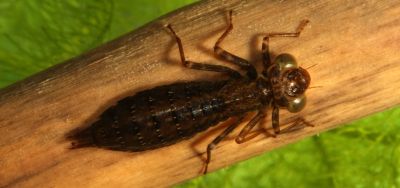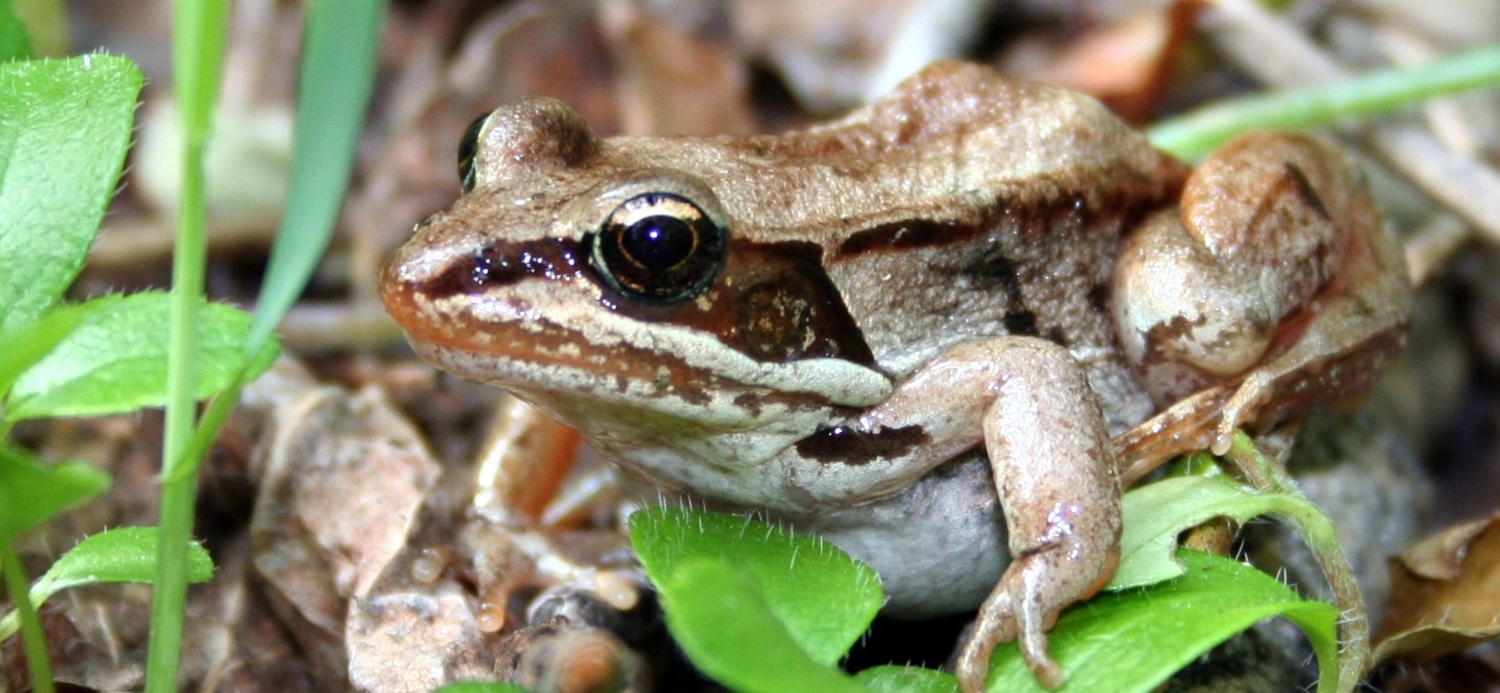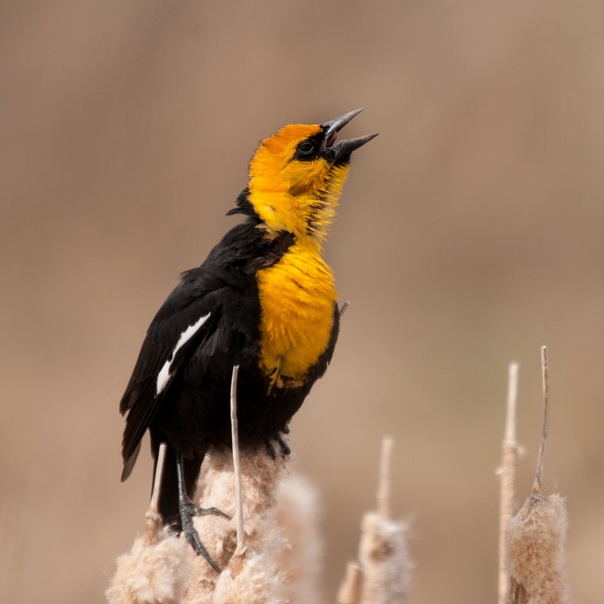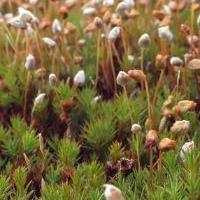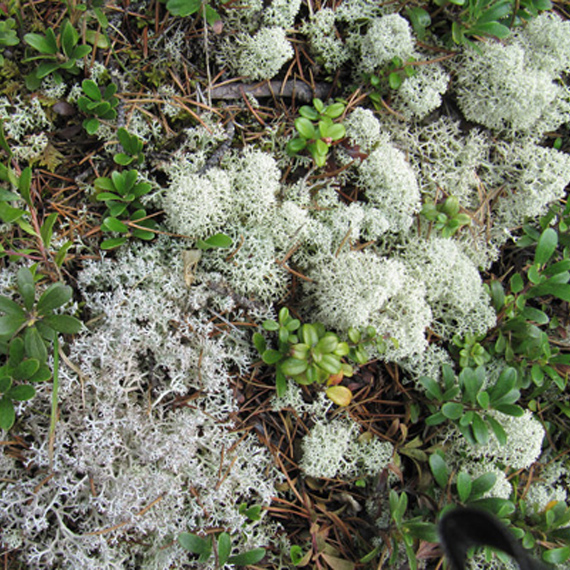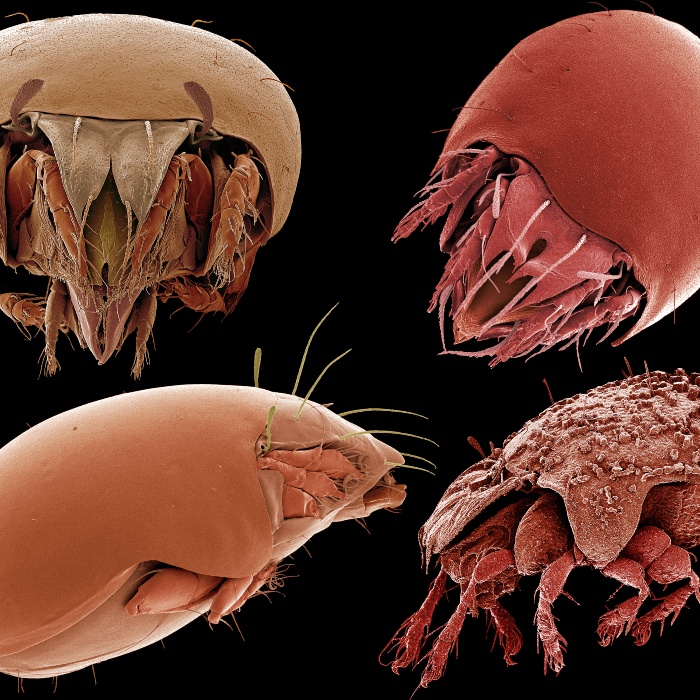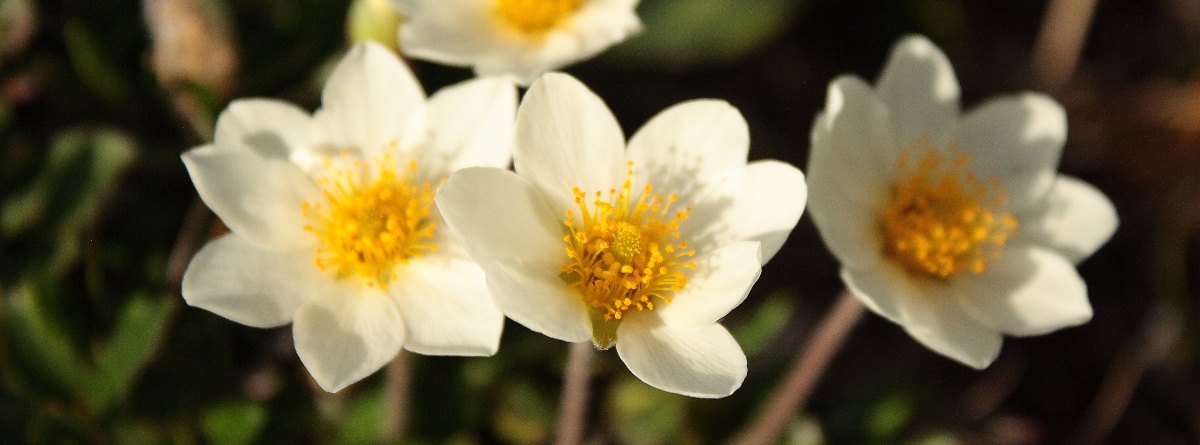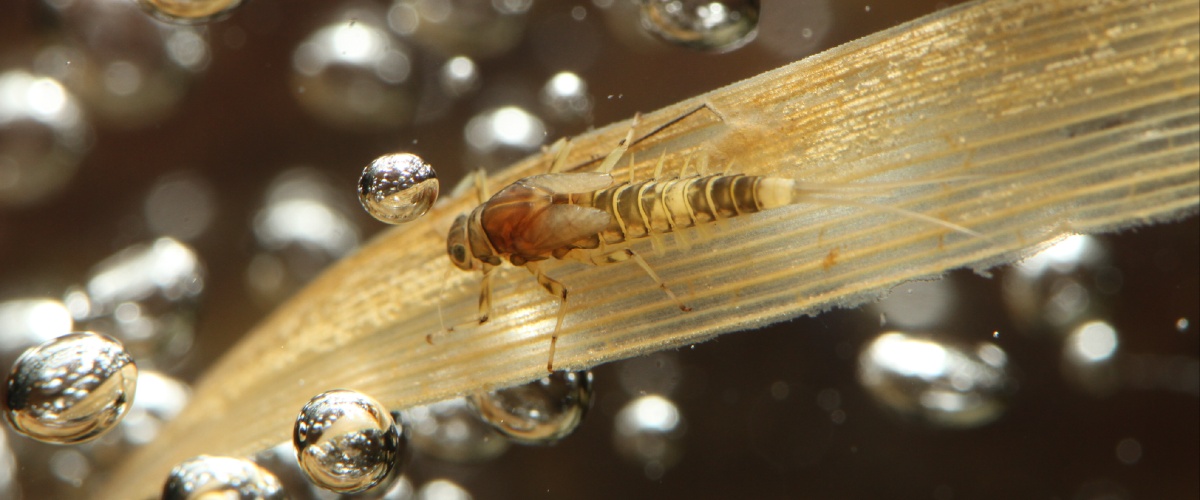
Aquatic Invertebrates
Aquatic invertebrates are important bioindicators, and the ABMI samples wetlands across the province annually.
Aquatic invertebrates are used as biological indicators due to their constant exposure to the physical and chemical properties of the water they live in. Environmental changes and intactness can be inferred by the change and response of sensitive species or entire invertebrate communities.
The ABMI samples wetlands across the province annually. Invertebrate samples are processed and subsampled before ABMI’s aquatic invertebrate taxonomists identify specimens to species. Species ID allows for individual and community taxon composition data to be analyzed.
Often referred to as aquatic bugs, invertebrates are a diverse group that forms a key link in aquatic and terrestrial food webs. Learn more about them and access our monitoring data and analysis.
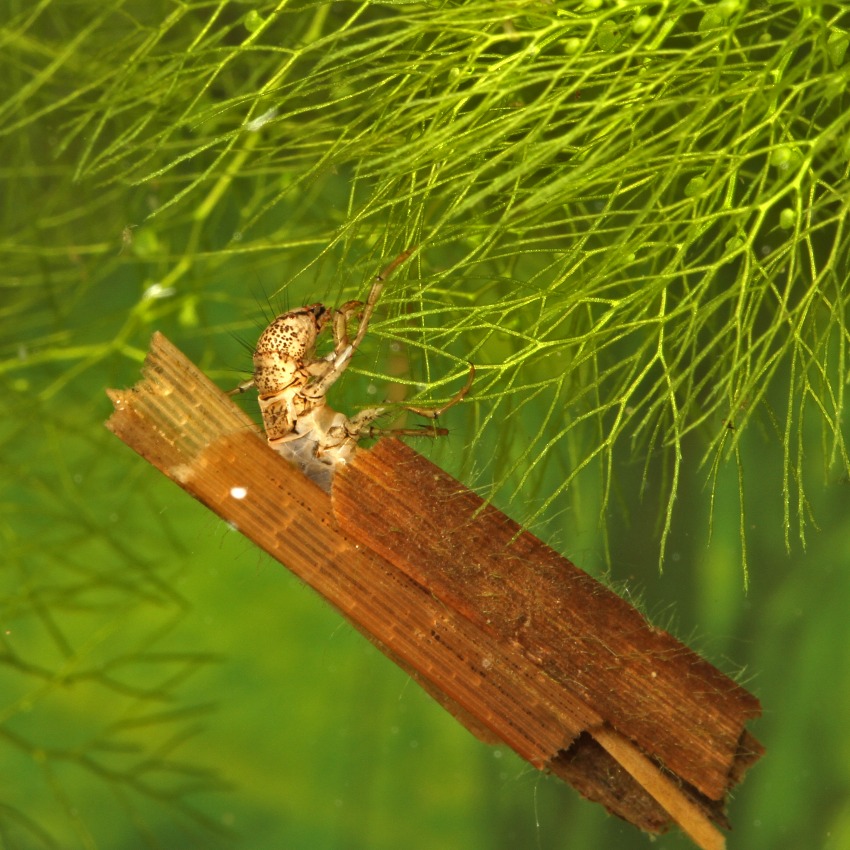
Anabolia – Photo: Rob Hinchliffe
Aquatic Invertebrates Form Key Links in Aquatic Food Webs
- We use "aquatic invertebrates" to refer to freshwater organisms from various taxonomic groups, such as insects, crustaceans, worms, and molluscs. They are united as a study group by their lack of backbones and their full or partial aquatic life histories.
- Aquatic invertebrates serve as biological indicators for ecological intactness.
- They form key links in aquatic food webs between phytoplankton and shorebirds, and they sustain sport fish populations.
- Since many aquatic invertebrates are constantly exposed to the physical and chemical properties of the water they live in, they can respond to the environmental conditions of their habitat.
Strength in Numbers
- In a single wetland, the number of individual aquatic invertebrates often exceeds the number of individual humans on the planet.
- Approximately 1,100 species of aquatic invertebrates have been recorded in Alberta, but the estimated diversity ranges from 5,000 to 15,000 species.
- Alberta is home to over 50 genera of chironomids.
- The diversity of aquatic invertebrates in Alberta is spread across 16 different phyla, 36 orders, 200-plus families, and about 530 genera.

Daphnia – Photo: Rob Hinchliffe

Photo: Rob Hinchliffe
Overview
- Certified taxonomists of the ABMI’s aquatic invertebrate team sort and identify invertebrates from aquatic samples collected across Alberta.
- Aquatic sampling at ABMI sites consists of net sweeps in a wetland. Samples capture an assortment of taxa, from delicate naiad worms to robust dragonfly nymphs, that are subsequently organized into subsamples.
- Subsamples are identified to the lowest taxonomic level by using the most current identification keys and taxonomic information available to provide highly consistent and accurate identifications.
- Data on aquatic invertebrates can be used in ecological studies that ask questions, such as "Have the physical properties of this wetland changed over the past 5 years?" or "What species might be affected by development of a wetland, and how might that interfere with resident shorebirds?"
Species Discoveries (in ABMI Samples)
- Corisella inscripta (2019) – new to Alberta
- Neohaemonia melsheimeri (2019) – new to Alberta
- Hesperocorixa scabricula (2021) – new to Alberta
- Sigara compressoidea (2021) – new to western Canada
- Sigara knighti (2021) – new to western Canada
Tebby, C., R. Hinchliffe, and T. Cobb. "New Waterboatman Record for Alberta, Corisella inscripta (Hemiptera: Corixidae)." Entomological News 128.4 (2019): 407–409.
Lapierre, A.R., et al. "New Record of Neohaemonia melsheimeri (Lacordaire, 1845)(Coleoptera: Chrysomelidae) from Alberta, Canada." The Coleopterists Bulletin 73.2 (2019): 440–442.
Lapierre, A.R., et al. "New Water Boatman Records from Alberta, Canada (Hemiptera: Corixidae)." Entomological News 129.5 (2021): 522–528.
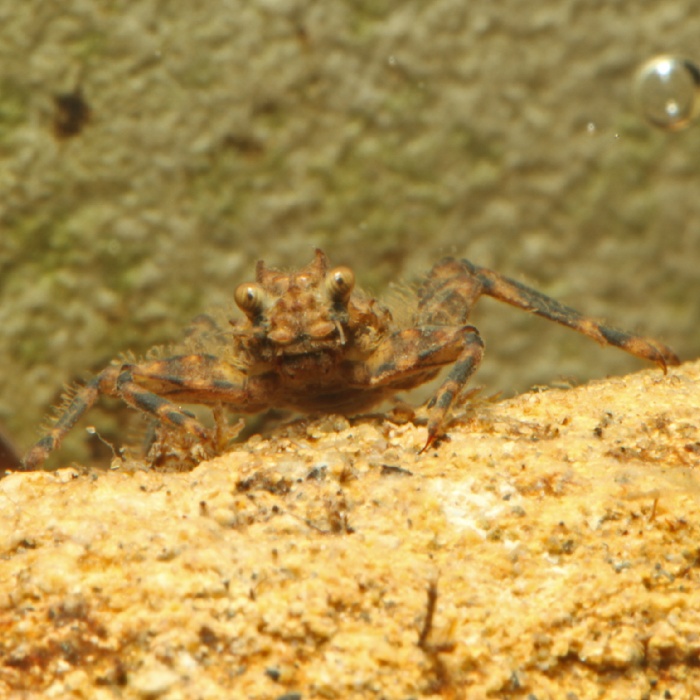.jpg)
Drunella sp. – Photo: Rob Hinchliffe
What's in a Name?
- Species identification can be difficult. Aquatic invertebrates are small, and their diagnostic features are often microscopic. Sometimes specimens are newly hatched and key structures needed for identification are undeveloped.
- Most aquatic invertebrates in Alberta can be identified to genus by using comprehensive taxonomic keys for North America, such as:
--> An Introduction to the Aquatic Insects of North America, 5th edition (2019), by R. W. Merritt (Editor), K. W. Cummins (Editor), and M. B. Berg (Editor).
--> Thorp and Covich's Freshwater Invertebrates: Keys to Nearctic Fauna, 4th edition (2016), by James H. Thorp (Editor) and D. Christopher Rogers (Editor).
--> Aquatic Invertebrates of Alberta (1991), by Hugh F. Clifford (Author). - During species identification, we refer to published, primary literature for taxonomic accuracy. However, certain taxa are in dire need of updated taxonomic keys or revisions. Where possible, we use the specimens in our reference collections to develop regional, in-house keys to species.
- Resolution: when specimens cannot be identified beyond family due to immaturity or damage to diagnostic features, the data generated by family-level identifications are still useful in monitoring biodiversity wetland health.
- Ongoing work involving DNA will continue to improve our taxonomic resolution.

Aquatic invertebrate sampling in the field
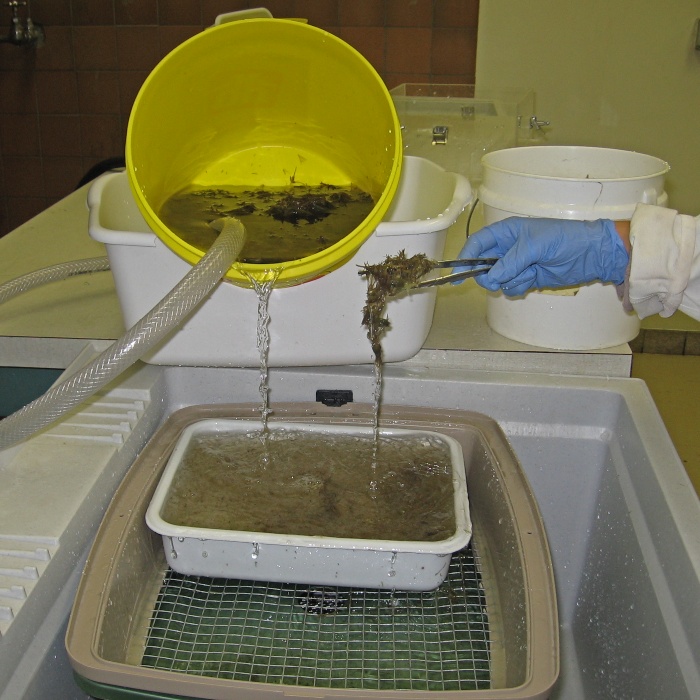
Elutriation setup separating invertebrates from vegetation
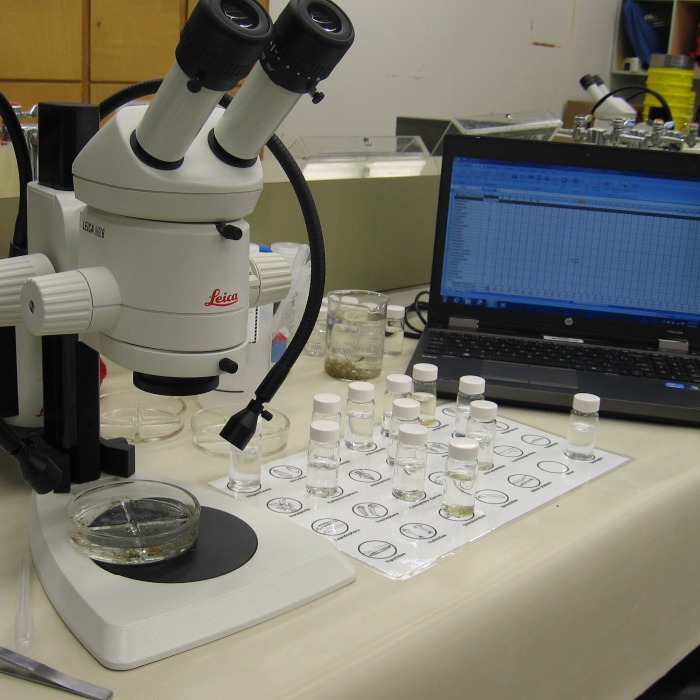
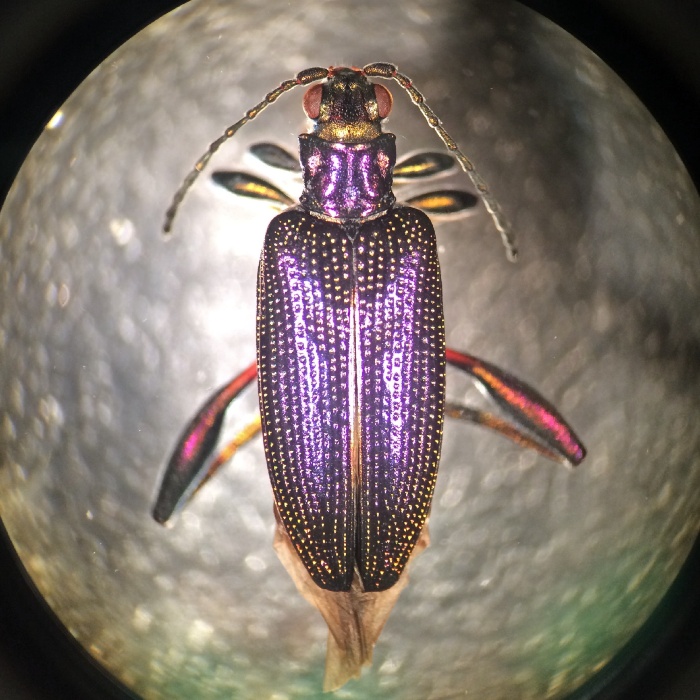
An aquatic leaf beetle: Donacia proxima (Chrysomelidae)
Workflow – Life of a Collection
Collections begin by annual field sampling. ABMI field technicians sample an assortment of invertebrates from wetlands across the province via net sweeps at set points in a wetland. Habitat information such as water depth, temperature and chemistry, and vegetation type are consistently recorded and compiled from site to site and sample to sample. These samples are preserved and sent to the Processing Centre at the University of Alberta to be washed, subsampled, and analyzed.
1. Samples consist of invertebrates and numerous large pieces of vegetation. Vegetation such as submerged and emergent macrophytes, algae, and decomposing woody debris impede efficient subsampling and thus need to be removed. Samples are washed through an elutriation system that separates light-bodied invertebrates from dense vegetation pieces.
2. Washed samples are transferred to a Marchant box: a standardized Plexiglas box used to subsample the remaining organic material into manageable units. Invertebrates and small pieces of vegetative debris are distributed randomly across the Marchant box’s grid of 100 identical wells. Technicians use a random-number generator to select a corresponding unit that contains a small section of the sample. This unit is then closely examined for invertebrates present.
3. Invertebrates are removed and coarsely sorted into appropriate taxonomic groups. These groups are then examined by the aquatic invertebrate taxonomists who identify every invertebrate to the lowest taxonomic level possible. In some cases, an invertebrate can be identified to subspecies.
4. An average of 17,000 specimens are identified each year; these data are sent to the ABMI’s Information Centre to be analyzed. Identified specimens are stored in vials of 80% ethanol and are used in part in a voucher collection for future specimen referral. Currently, specimens are housed at the Royal Alberta Museum.
- The Advance ID: Our aquatic invertebrate taxonomists renew their taxonomic certifications though the Society for Freshwater Science every five years. They always seek to improve their identification methods and refer to museum collections across Canada when needed.
- Some taxa present unique challenges for identification. For instance, tiny midge larvae (Family: Chironomidae) or freshwater worms (Family: Naididae) possess morphological features that are just too small to be seen by a dissecting microscope. These animals require an additional step of slide-mounting for accurate identification.
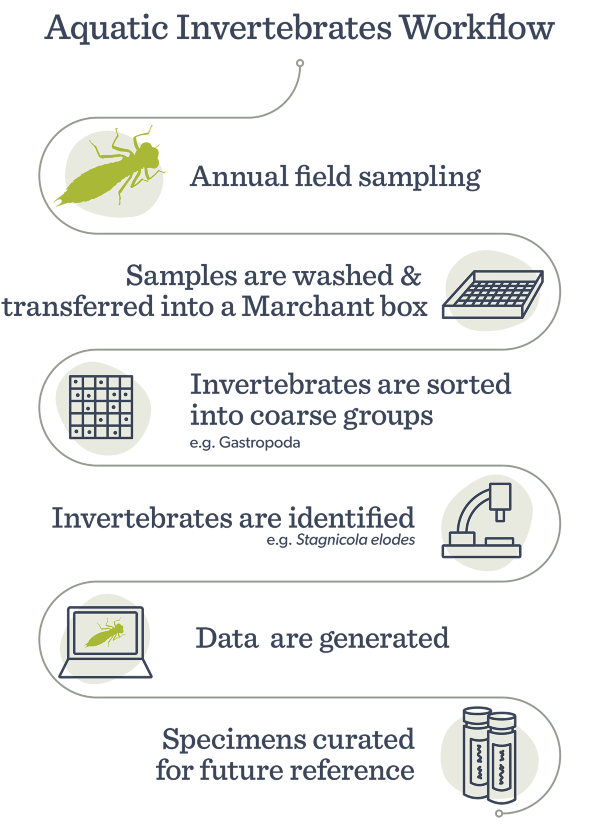
The Peltigera project aims to expand our understanding of Peltigera lichen diversity in Alberta through genetic markers. Building on the research done by global Peltigera experts, we hope to use genetic data to both verify our identifications and detect new species to the province.
The ABMI’s Ecological Recovery Monitoring (ERM) project assesses ecological recovery of certified reclaimed oil and gas wellsites.
Learn more about aquatic invertebrates and why they are important to monitor. Find out about individual aquatic invertebrates species in Alberta on ABMI's Biodiversity Browser.
